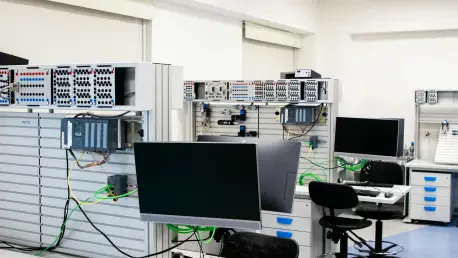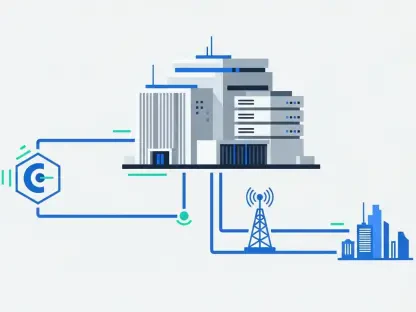Nestled among the breathtaking vistas and serene rural expanses of Utah, a quiet revolution is stirring that could redefine the state’s identity on a global scale, especially in the heart of Millard County near the small town of Delta. Ambitious plans are taking shape to potentially create the world’s largest data center campus, a development that could catapult Utah into the forefront of technological innovation. Spearheaded by a coalition of forward-thinking companies such as Fibernet MercuryDelta LLC, Creekstone Energy LLC, BlueSky AI, and Joule Capital Partners, this visionary project seeks to convert vast stretches of agricultural land into cutting-edge hubs for high-performance computing and artificial intelligence infrastructure. The scope of this endeavor is nothing short of monumental, with the proposed Delta Gigasite alone spanning nearly 1,200 acres and aiming to cover an unprecedented 20 million square feet, surpassing the current record holder in Hohhot, China. As these plans unfold, they promise not only to reshape the local economy but also to position Utah as a pivotal player in the global tech arena. However, alongside the excitement, significant challenges loom large, from resource demands to community impacts, sparking a complex debate about the future of this rural region.
A Vision of Unmatched Scale
The centerpiece of this transformative initiative in Millard County is the Delta Gigasite, a project led by Fibernet MercuryDelta LLC with aspirations to become the largest data center campus in the world. Spanning an immense 20 million square feet, this development dwarfs existing facilities and signals a bold leap into the future of technology. Complementing this vision, Creekstone Energy LLC, in partnership with BlueSky AI, is set to provide a staggering 10 gigawatts of power capacity, sourced from a mix of solar energy, natural gas, and contributions from the Intermountain Power Project (IPP). This collaborative effort underscores a fierce determination to establish Utah as a cornerstone of digital infrastructure, particularly for AI-driven advancements. The sheer magnitude of the project reflects not just technological ambition but also a strategic move to place the state at the epicenter of a rapidly evolving industry, potentially drawing global attention and investment to a region previously known more for its natural beauty than its tech prowess.
Beyond the Delta Gigasite, the momentum continues with another significant undertaking by Joule Capital Partners, which is pushing to rezone 4,000 acres of farmland into a heavy industrial zone for yet another sprawling data center campus. This parallel project amplifies the scale of transformation envisioned for the area, as thousands of acres shift from agricultural roots to industrial might. The involvement of multiple major players in such close proximity hints at a competitive yet synergistic drive to create a tech hub that could redefine economic landscapes. Local governance has shown support by approving necessary rezoning, signaling confidence in the potential benefits. Yet, as these plans progress, they also raise critical questions about how such rapid industrialization will mesh with the region’s traditional identity, setting the stage for a broader discussion on balancing progress with preservation.
Navigating Energy and Sustainability Hurdles
Powering data centers of this magnitude presents a formidable challenge, especially given the intense energy and water needs tied to AI and high-performance computing operations. These facilities require constant electricity not just for processing but also for cooling systems to prevent overheating. Creekstone Energy has put forward plans to leverage over 30,000 acres of solar-ready land, aiming to harness renewable energy for a significant portion of the 10 gigawatts needed. Additionally, innovative cooling technologies are being touted as a solution that could generate surplus water, addressing some resource concerns. However, the proposal to utilize coal-fired units from the IPP has ignited controversy, as it conflicts with broader environmental mandates pushing for cleaner alternatives like natural gas or hydrogen blends. This reliance on traditional, less sustainable energy sources casts a shadow over the projects’ green credentials, prompting scrutiny about whether the state’s infrastructure can support such demands without compromising long-term ecological goals.
The sustainability debate extends beyond energy to encompass water usage, a critical issue in Utah’s arid, high-desert environment. While advanced cooling systems may mitigate some concerns by producing net-positive water in certain scenarios, the sheer scale of these campuses raises lingering doubts about the strain on local resources. Environmental advocates and policymakers are keenly observing how these developments will align with the state’s conservation priorities, especially as water scarcity remains a pressing issue. The tension between technological advancement and environmental responsibility is palpable, with critics arguing that the benefits of becoming a tech hub must not come at the cost of depleting vital natural resources. As plans move forward, finding a balance between meeting operational needs and adhering to sustainable practices will be paramount, shaping the narrative of whether Utah can truly lead in this space without sacrificing its ecological integrity.
Economic Opportunities Versus Community Concerns
From an economic standpoint, the data center projects in Millard County offer a transformative opportunity that could inject billions of dollars into the local economy. Proponents highlight the potential for substantial tax revenues, which could bolster public services and infrastructure in a region hungry for growth. Job creation is another significant draw, with promises of new positions ranging from construction to high-tech roles, alongside the preservation of existing employment tied to related industries. The Millard County Commission’s unanimous approval of rezoning requests reflects a strong local endorsement, with many officials viewing these developments as a catalyst for revitalizing an area often overshadowed by urban centers. This economic optimism paints a picture of a future where rural Utah could emerge as a powerhouse, attracting further investment and talent to a state eager to diversify its economic base beyond tourism and agriculture.
Yet, beneath the surface of economic promise lies a deep-seated divide within the community, as not all residents welcome the impending changes with open arms. For some, like local rancher J.B. Lovell, the prospect of industrial sprawl threatens the very essence of rural life that defines Delta and its surroundings. The tranquility of wide-open spaces and the simplicity of agricultural traditions stand at risk of being overshadowed by towering data centers and the bustle of industrial activity. This sentiment reveals a cultural clash between progress and heritage, where the benefits of jobs and revenue are weighed against the potential loss of a way of life cherished by many. Community voices are split, with some embracing the chance for modernization while others fear an irreversible shift in identity. This tension underscores the broader challenge of ensuring that economic development does not alienate those who call the region home, highlighting the need for inclusive dialogue as these projects advance.
Legislative Skepticism and Broader Implications
At the state level, the ambitious data center proposals have encountered a degree of skepticism that contrasts with local enthusiasm. Utah Senator Nate Blouin has voiced reservations about the initial pitches, particularly criticizing the reliance on coal-fired energy from the IPP as a questionable choice that may not enhance statewide grid reliability. The concern is that such projects could prioritize the needs of data centers over the broader interests of Utah residents, potentially diverting resources and incentives without proportional benefits to the public. This legislative caution points to a critical oversight role, questioning whether the state should offer substantial support or tax breaks for developments that carry environmental and strategic risks. The divergence between county-level approval and state-level wariness illustrates a complex political landscape, where the promise of innovation must be balanced against accountability and long-term planning.
Looking at the bigger picture, these developments in Millard County reflect a global trend where data centers are becoming indispensable infrastructure for AI and digital economies, positioning regions like Utah as contenders in a high-stakes technological race. The involvement of multiple companies in a concentrated area suggests a burgeoning hub that could attract further industry players, potentially transforming the social and economic fabric of the state. However, the challenges of energy sustainability, resource allocation, and community impact remain central to the discourse. The mixed reactions—from local support to legislative doubt—highlight the multifaceted nature of such large-scale projects, where economic ambition must navigate environmental and cultural considerations. As Utah stands at this crossroads, the decisions made in the coming years will likely serve as a case study for how rural regions can integrate into the global tech landscape while addressing the inherent tensions of rapid industrialization.
Reflecting on a Transformative Path Forward
Looking back, the journey to position Utah as a potential home for the world’s largest data center campus unfolded as a complex tapestry of ambition and contention. The initiatives led by Fibernet MercuryDelta LLC and others in Millard County captured imaginations with their sheer scale, promising to elevate the state’s status in the tech world through projects like the Delta Gigasite. Economic prospects shone brightly, with local support echoing through rezoning approvals, while community voices revealed a poignant divide over the preservation of rural life. Energy and sustainability challenges, coupled with legislative skepticism, added layers of scrutiny to what was initially seen as a straightforward path to progress.
Moving forward, the focus must shift to actionable strategies that harmonize technological growth with environmental stewardship and community well-being. Stakeholders should prioritize transparent dialogue, ensuring that local concerns about lifestyle impacts are addressed alongside economic planning. Investment in renewable energy solutions could mitigate the environmental critiques, aligning these projects with broader sustainability goals. State oversight must also play a pivotal role, crafting policies that balance incentives with accountability to safeguard Utah’s resources for future generations. As this chapter continues to evolve, the lessons learned could inform how other regions tackle similar transformations, offering a blueprint for integrating digital innovation into traditional landscapes with care and foresight.









